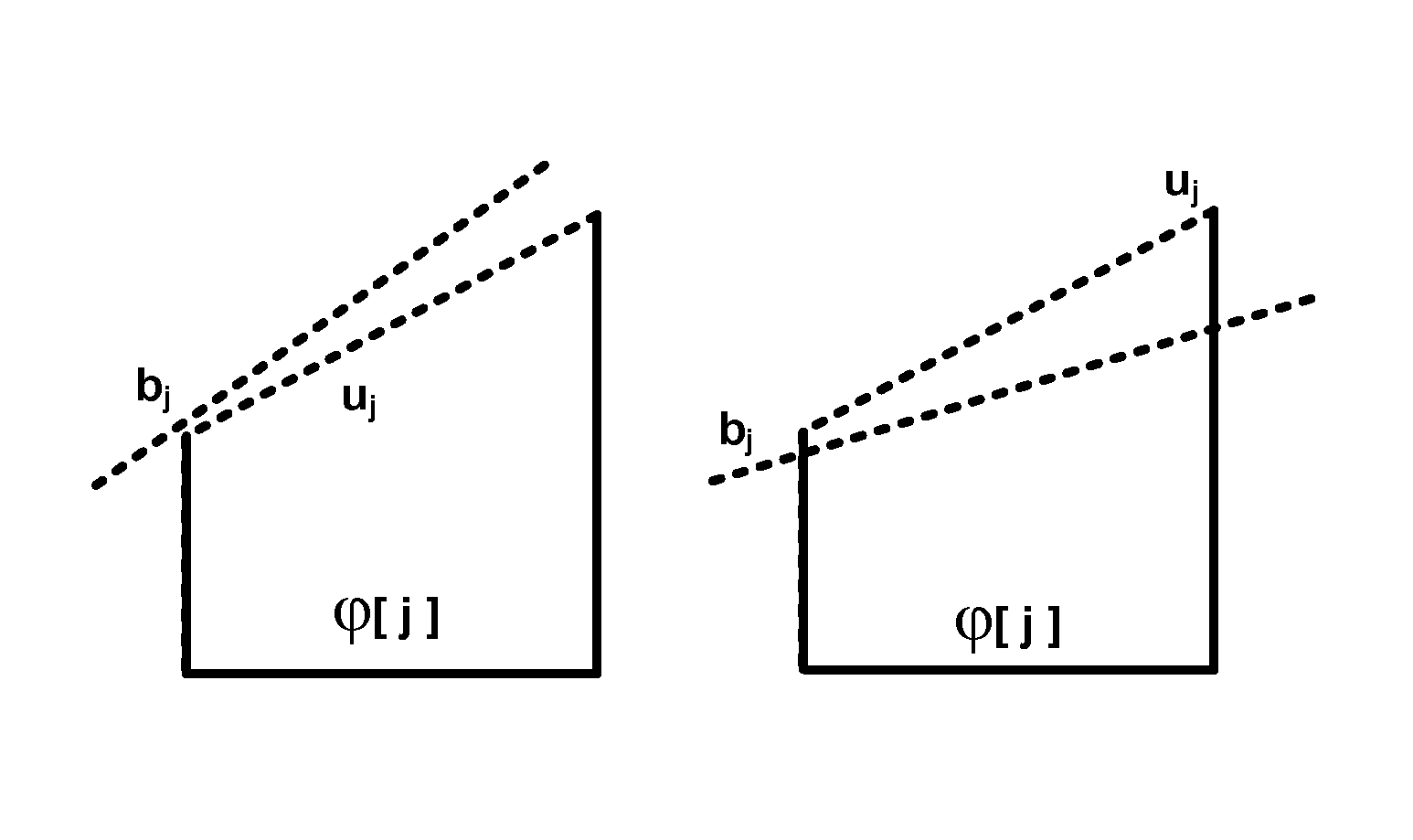Program analysis using symbolic ranges
a symbolic range and program analysis technology, applied in the field of program analysis techniques, can solve the problem that invariants are nevertheless inadequate, and achieve the effect of improving the accuracy of the analysis
- Summary
- Abstract
- Description
- Claims
- Application Information
AI Technical Summary
Benefits of technology
Problems solved by technology
Method used
Image
Examples
example 1
[0033]φ:x2+4≦x1≦2x3+x2+4−x3≦x2≦x3+4−∞≦x3≦0 is a SRC. The variable ordering is x1x2x3. The bound for xl involves {x2,x3}, x2 involves {x3} and x3 has constant bounds.
[0034]Implied constraints & normalization. Given a symbolic range li≦xi≦ui, its implied inequality is li≦ui. Note that the implied inequality li≦ui only involves variables xi+1, . . . ,xn.
[0035]Definition 4—Normalization: A SRC is normalized iff for each variable bound li≦xi≦ui, φ[i+1]li≦ui. By convention, the empty and universal SRC are normalized.
example 2
[0036]The SRC φ from Example 1 is not normalized. The implied constraint 0≦2x3 derived from the range x2+4≦x1≦2x3+x2+4 is not implied by φ[2]. The equivalent SRC φ′ is normalized:
φ′:x2+4≦x1≦2x3+x2+4−x3≦x2≦x3+40≦x3≦0
Unfortunately, not every SRC has a normal equivalent. The SRC ψ:x2−x3≦x1≦10≦x2≦20≦x3≦2 forms a counter-example. The projection of ψ on the {x2,x3} is a five sided polygon, whereas any SRC in 2D is a trapezium.
[0037]Weak optimization algorithms: Optimization is used repeatedly as a primitive for other domain operations including abstraction, join and intersection. Consider the optimization instance min.(e:{right arrow over (c)}T{right arrow over (x)}+d)s.t.φ. Let φ be a satisfiable SRC with bound lj≦xj≦uj for index 0≦j
[0038]
denote the replacement of xj in e by lj (lower bound in φ) if its coefficient in e is positive, or uj otherwise.
[0039]Formally,
[0040]e′={e-cjxj+cjlj,cj≥0e-cjxj+cjuj,cj<0
The canonical sequence, given by
[0041]
replaces variables in the asc...
example 3
[0045]Consider the SRC φ′ defined in Example 2 and the expression: e: −3x1+2x2+8x3. This yields the sequence:
[0046]
It follows that en under-approximates the minima of the optimization problem, and if φ is normalized, weak optimization computes the exact minima; the same result as any other LP solver.
[0047]Theorem 1—Weak Optimization Theorem: Given a constraint φ and the sequence eφ en, φe≧en. Furthermore, if φ is normalized then en=min es.t.φ.
[0048]Weak optimization requires O(n) rewriting steps, each in turn involving arithmetic over expressions of size O(n). Therefore, the complexity of weak optimization for a SRC with n constraints is O(n2).
PUM
 Login to View More
Login to View More Abstract
Description
Claims
Application Information
 Login to View More
Login to View More - R&D
- Intellectual Property
- Life Sciences
- Materials
- Tech Scout
- Unparalleled Data Quality
- Higher Quality Content
- 60% Fewer Hallucinations
Browse by: Latest US Patents, China's latest patents, Technical Efficacy Thesaurus, Application Domain, Technology Topic, Popular Technical Reports.
© 2025 PatSnap. All rights reserved.Legal|Privacy policy|Modern Slavery Act Transparency Statement|Sitemap|About US| Contact US: help@patsnap.com



